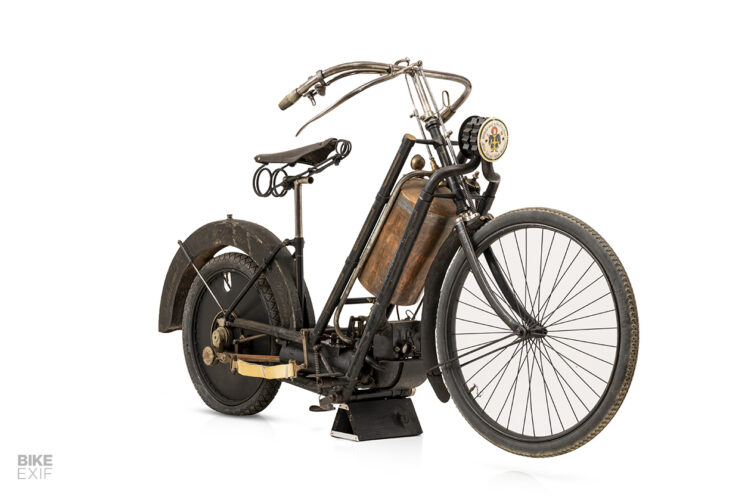
This sounds terrifying. The 1894 Hildebrand & Wolfmuller motorcycle that recently sold at a Bonhams auction proves that old-school motorcyclists were built of something more than we are today.
We take transmissions for granted, but in 1894 this motorcycle was direct drive. The connecting rods for the Hildebrand’s pistons were connected directly to the rear wheel, and it has no clutch. The faded white bands on the frame? Those are rubber bands that helped yank the pistons back on the return stroke.
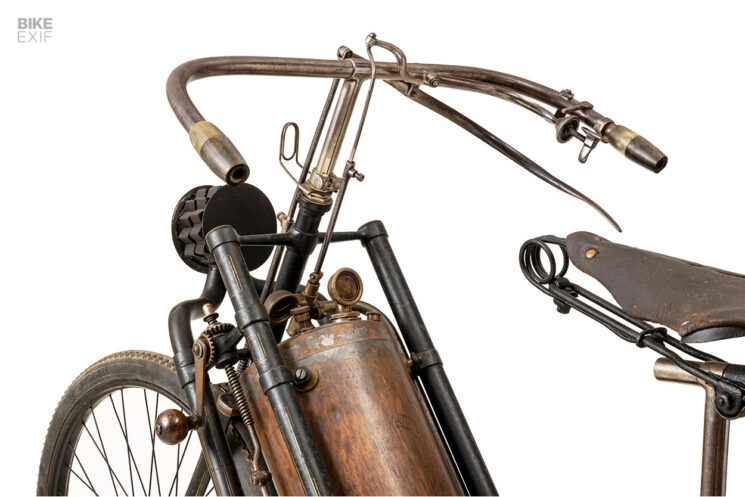
The brakes? Well, they’re simply a “spoon” that presses a metal pad into the tire, and when you press the brake, the throttle automatically closes. Speaking of the throttle, it’s simply a thumbscrew. Since there’s no clutch, that means you had to push-start the bike and hop on it while it’s running. Yikes. But what do you expect from the world’s oldest motorcycle?
Though the Hildebrand is primitive and terrifying, at the time it was a state-of-the-art motorcycle that set competition records and today is recognized as the first series production motorcycle. This particular model sold at a Bonhams auction in Paris for €195,500, or about $209,000, last week. Interestingly, the term “motorrad,” which is German for “motorcycle,” was patented in 1894 by Hildebrand, according to Bonhams.
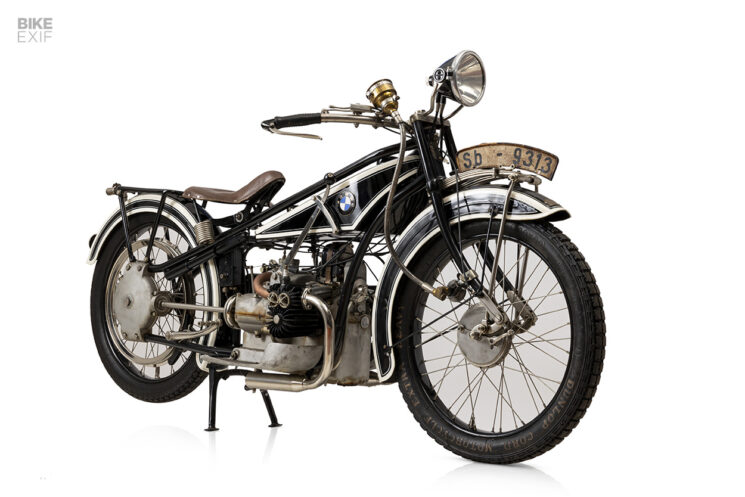
Also at the Bonhams auction, an early 1924 BMW R32 motorrad sold for €143,750, or about $154,000. This particular bike has sales records going back to December of 1924, and it has a BMW Club membership card from 1925. Its sales price likely got a lift thanks to BMW celebrating its 100-year anniversary in 2023.
Compared to the Hildebrand, it seems positively modern. The BMW R32 has a twin-cylinder side-valve engine with two horizontally-opposed cylinders, a layout that many BMW purists still prefer today. Today’s R bikes still use the internal gearbox and shaft-drive layout of these early BMWs. Thankfully, the drum brakes have long since been ditched.
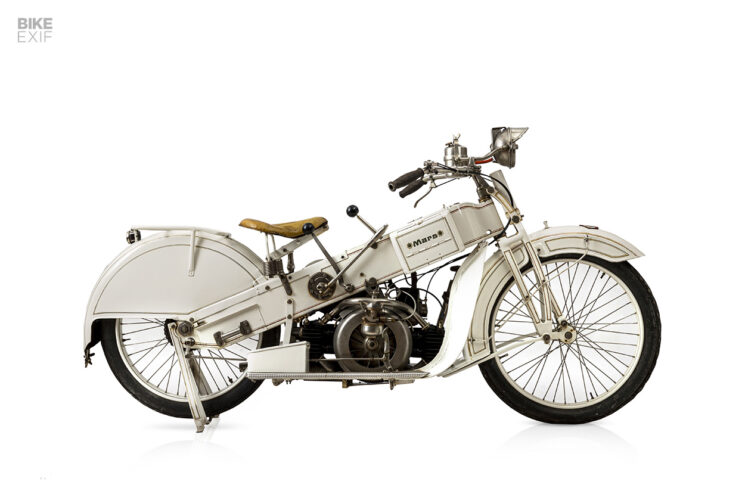
Today, we know Maybach as the premium brand of Mercedes-Benz. But in the 1920s the company built special high-performance engines for other manufacturers, and one found its way into the German White Mars MA 20 motorcycle that was introduced in 1920. The twin-cylinder 956cc side-valve engine was mounted horizontally in the frame (the opposite of the BMW) and had a two-speed twin-chain transmission or an internal three-speed. While most motorcycles of the era were built on bicycle frames, the Mars had steel box-frame construction that set it apart as a premium steed.
The Mars sold for €95,450, or about $102,000, at the Bonhams auction. Most modern riders could hop on the BMW, and likely the Mars, without too much trouble. But would you take a chance on riding the push-start, direct-drive, Hildebrand?
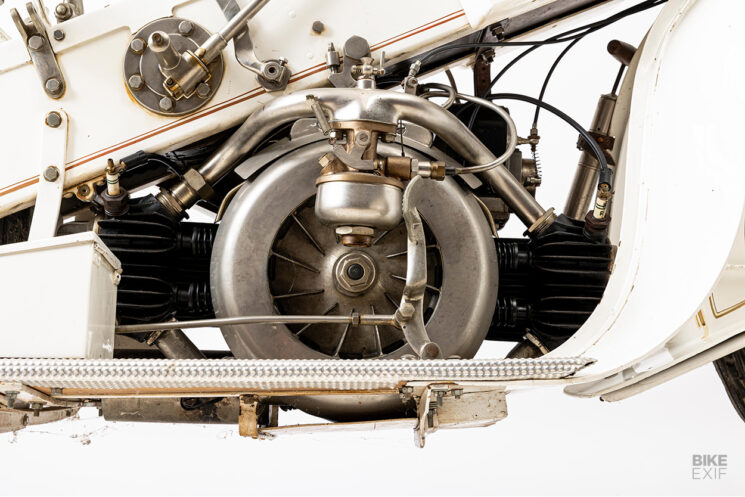
from Bike EXIF https://ift.tt/8mGeoDQ
No comments:
Post a Comment